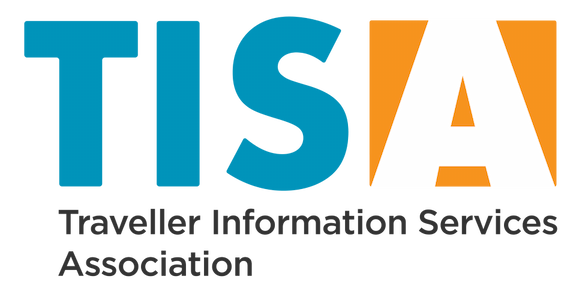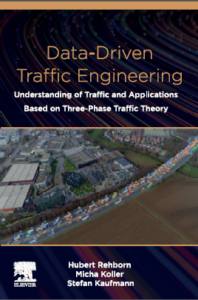During the Committee Meetings held virtually in March, TISA Members were joined by representatives of BASt (Federal Highway Research Institute Germany), DATEX II, TNO and ACEA to learn more about mobility data platforms in Europe, recent developments on DATEXII, data for road safety as well as progress on truck platooning topics.
TISA Members gathered once again virtually to continue shaping the quality of travel information services worldwide, this time joined by representatives from companies and organizations that focus on the mobility data platforms, data exchange in context with safety-related traffic information as well as truck platooning.
‘We are following closely the development of the national data platforms as they boost the availability of traffic related data and lower the thresholds for new entrants and innovative services. Glad to see also that the Data For Road Safety group is making good progress to shape the Safety Related Traffic Information (SRTI) ecosystem.’, says Matthias Unbehaun, TISA Executive Director. ‘Not to forget to mention our long and fruitful collaboration with the DATEX II community, which resulted in such milestone publications like the Safety-related Message Sets for SRTI, of which we just published the 3rd revision.’, he added.
Peter Lubrich (BASt) opened the meetings with an overview of NAPs (NAPs is a term initiated by the European Commission in the ITS Directive and stands for National Access Points) as a building block for the digitalisation of mobility, and provided an overview of the ecosystem of data platforms across Europe from their perspective. With many TISA Members using data at National Access Points in their services, Mr. Lubrich’s presentation was very useful, especially when considering NAPs as facilitators in the exchange and reuse of data, connectors of data suppliers and users, and supporters of EU-wide interoperable ITS services. In fact, NAPs are a key element to successful ITS services across different actors, use cases and countries, as they provide access to a wide variety of data coming from different countries.
Moving on to the rail sector, Thomas Kusche-Knežević (WRD) announced a cooperation between German rail operator Deutsche Bahn and the German national broadcaster ARD that resulted in a new TPEG service.
‘Nearly half of our audience uses public transport for their regular mobility needs. It is an exciting approach to inform such a huge crowd on the same well-known platform, traditionally provided for road users. Based on the powerful capabilities of TPEG, Deutsche Bahn and ARD will showcase the opportunities during ITS Hamburg as an improvement for sustainable mobility.’, he added.
Deutsche Bahn is cooperating with TISA member ARD on their mobility data platform, thanks to which this data can be transferred to TPEG using the TPEG PTS specification (Public Transport information services).
From rail back to road traffic, Bard de Vries (Chair of the DATEX II Technical Group and Chair SRTI Working Group) provided an update on DATEX II version 3, glancing through its content part, as well as its components, ending with DATEX II in the NAPs ecosystem.
‘DATEX II and TISA for a symbiotic relation in a way that DATEX II covers the content segment of the value chain, connecting data centres, traffic operators and service providers, whereas TPEG provides the downlink to the end user.’, continues Matthias Unbehaun. ‘To keep both developments in sync is of vital importance to ensure reliable, high-quality traffic services’.
An important part of Mr. de Vries’ presentation was the update on the SRTI document and its third revision.
‘A harmonized message set for safety related traffic information is a key ingredient towards the effective warning of drivers on the road for unusual, safety impacting situations. This third version of the guideline for safety-related traffic message sets reflects the latest developments and practices in the collection and provisioning of safety-related traffic information. Prepared and harmonized with an increasing group of stakeholder organizations, this effort shows that fostering traffic safety by better information is an enduring focus theme throughout Europe, for both public and private stakeholders alike.’, said Teun Hendriks, Chair of the TISA Technical and Standardisation Committee.
Dehlia Willemsen (Research Scientist at TNO) presented the EU-funded project ENSEBMLE (ENabling SafE Multi-Brand Platooning for Europe), with its design and implementation of platooning as a support function, as well as latest results. The main goal of ENSEMBLE is to harmonise multi-brand specifications, realising a multi-brand V2V communication protocol leading to standards for truck interoperability, based on a communication protocol that could provide valuable information to traffic participants around a platoon and hence be of high interest for TISA.
Ending the committee meeting presentations, Joost Vantomme (ACEA Smart Mobility Director and Chair of the Data for Road Safety Partnership) provided an overview of data sharing for road safety, focusing on European policy, types of data and roles.
The March Committee Meetings were also an opportunity for Members to follow-up on important matters concerning technical standardisation, the products committee and the activities and executive office reporting.
The TISA Committee meetings provide a very important opportunity for the TISA community to meet, present new Use Case Proposals and discuss the priority for the work programme of the TISA Working Groups and Task Forces. TISA Members will reconvene for the next Committee Meetings and General Assembly on 8 and 9 June 2021.
All presentations are available for TISA Members on confluence.

 Are you an engineer or scientist who deals with congestion modeling and measurement problems? Then this publication is for you! “Data-Driven Traffic Engineering: Understanding of Traffic and Applications Based on Three-Phase Traffic Theory”, by Rehborn Hubert (from TISA Member Daimler), Koller and Kaufmann, shifts the current focus from using modeling and simulation data for traffic measurements to the use of actual data. The book uses real-world, empirically-derived data from a large fleet of connected vehicles, local observations and aerial observation to shed light on key traffic phenomena.
Are you an engineer or scientist who deals with congestion modeling and measurement problems? Then this publication is for you! “Data-Driven Traffic Engineering: Understanding of Traffic and Applications Based on Three-Phase Traffic Theory”, by Rehborn Hubert (from TISA Member Daimler), Koller and Kaufmann, shifts the current focus from using modeling and simulation data for traffic measurements to the use of actual data. The book uses real-world, empirically-derived data from a large fleet of connected vehicles, local observations and aerial observation to shed light on key traffic phenomena. LinkedIn
LinkedIn